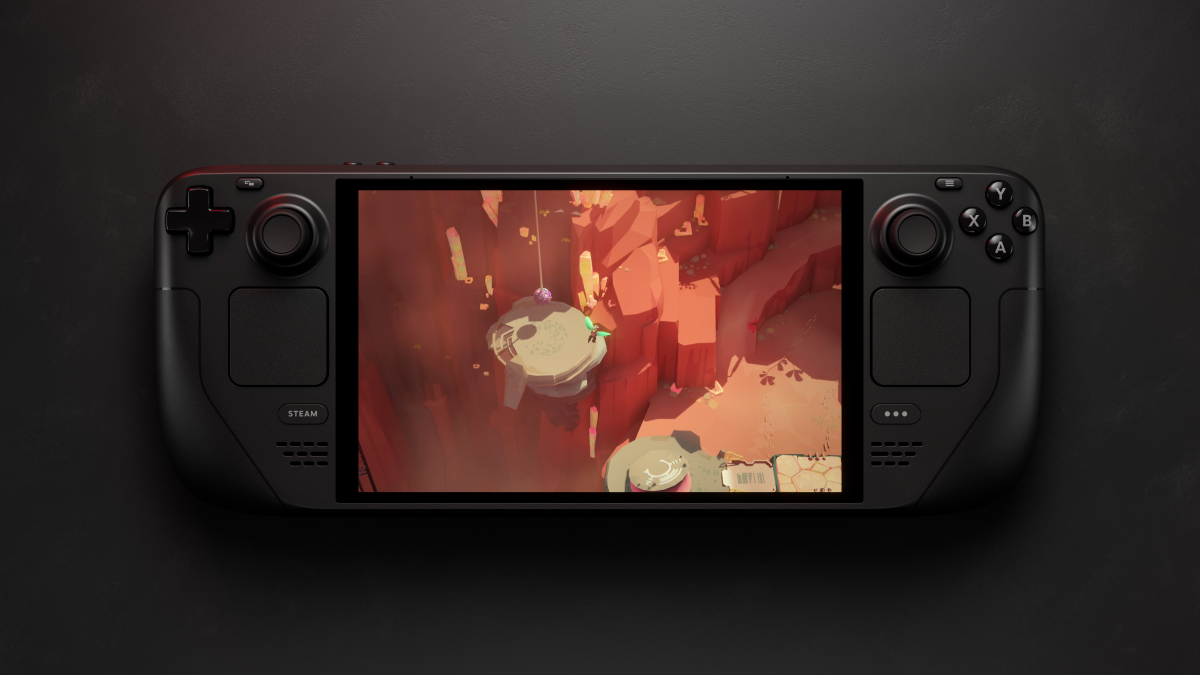Steam Deck OLED Review: Handheld Fidelity at Its Finest
Valve's new version of the Steam Deck makes the platform too good to pass up any longer.
For nearly two years, I've struggled to avoid purchasing Valve's Steam Deck handheld. Despite hearing such much praise for the hardware and what it was capable of, I continued to hold off on purchasing the device, partially in the hope that an upgraded version of the machine would come about before long. As luck would have it, my patience finally paid off to close out this year as the Steam Deck OLED was surprisingly revealed and released within the past month. After having now experienced the Steam Deck for myself, I'm thoroughly impressed with what Valve has created on just about every front.
Generally speaking, the OLED model of the Steam Deck is the same as the original version in terms of its form factor. Valve has included a few new, major upgrades that you would expect from a mid-gen refresh of this type, though. Notably included with the OLED iteration is an improved battery life, a better cooling system, and an improved Wifi chip that allows downloads to be faster than on the baseline Steam Deck.

This final upgrade is the one I've found myself most impressed with as I was able to download dozens of games from my Steam library in mere minutes upon booting up the Steam Deck for the first time. Obviously, these downloads will only be as fast as your own Internet speeds, but I found that adding games to my Steam Deck took roughly half the time that it does on my other various consoles and computer. Knowing this, it makes me that much more likely to freely install and uninstall games at a constant rate without fearing lengthy downloads in the future.
The big selling point with this new Steam Deck is in its name. The OLED screen that Valve has implemented on the latest version of the Steam Deck is a huge improvement to the LCD screen. Every game I have played on the Steam Deck OLED so far has been incredibly vibrant, and when compared to Nintendo's own Switch OLED, has been far more impressive. Much of this is likely due to the fact that the Steam Deck has more powerful internals when compared to the Switch, but this increased power only makes better use of the OLED screen compared to the competition. This is without a doubt the best handheld I've ever used, at least in terms of visual fidelity.
Even though games look great, I have to say the act of playing them isn't always lovely. The Steam Deck is a bit obtuse in its design and is something that I didn't always find comfortable after prolonged use. I think this is primarily due to the size of the Steam Deck itself, which has a bit of heft to it. Outside of the weight, the height and length of the handheld can make for a bit of discomfort. I imagine this is only amplified by those who have smaller hands.
Despite this general complaint, I think all of the individual components that make up the Steam Deck feel great. Triggers are responsive, thumbsticks glide in a smooth manner, and even the trackpads are better than I expected. The general build quality of the Steam Deck is also excellent. This is something that I feel is going to stand the test of time and won't begin wearing down in the years to come.

The operating system (OS) that sits at the core of the Steam Deck is something I have also found to be very snappy. Swapping between your own library of games, the Steam storefront, and the platform's own personalized settings can be done with just a few simple button presses. The OS really allows Valve to show off many of the improvements and core features of Steam that it has built on in recent years in a way that makes sense on a handheld device.
The thing that I'm still finding myself most compelled by with the Steam Deck is just how customizable it is. This doesn't only extend to downloading different boot-up animations (which I do love), but also with what you can install on the hardware. In its purest form, the Steam Deck is simply a handheld PC, which means that there is a ton you can do. Swapping to the system's desktop mode to download emulators for the Steam Deck, in particular, is something I've been experimenting with a lot more lately and I've been shocked by how easy it is. Best of all, if this is something you opt to do for yourself, games you're looking to emulate will appear in the "Non-Steam" section of your library and can be fired up in no time. It's this level of customization that really sets the Steam Deck apart, especially when compared to traditional gaming platforms.
If you're like me and have been patiently waiting to pick up a Steam Deck for yourself, I can comfortably say that the OLED model is finally worth taking the plunge. I have not found myself as engrossed with a new piece of gaming hardware in quite a long time and I believe that I'm only going to keep using the Steam Deck more and more in the future. Assuming that you already have a vast Steam library at your disposal, the Steam Deck is an easy recommendation, especially with this year's Winter Sale right around the corner.
A complimentary Steam Deck OLED unit was provided by Valve for the purpose of this review.